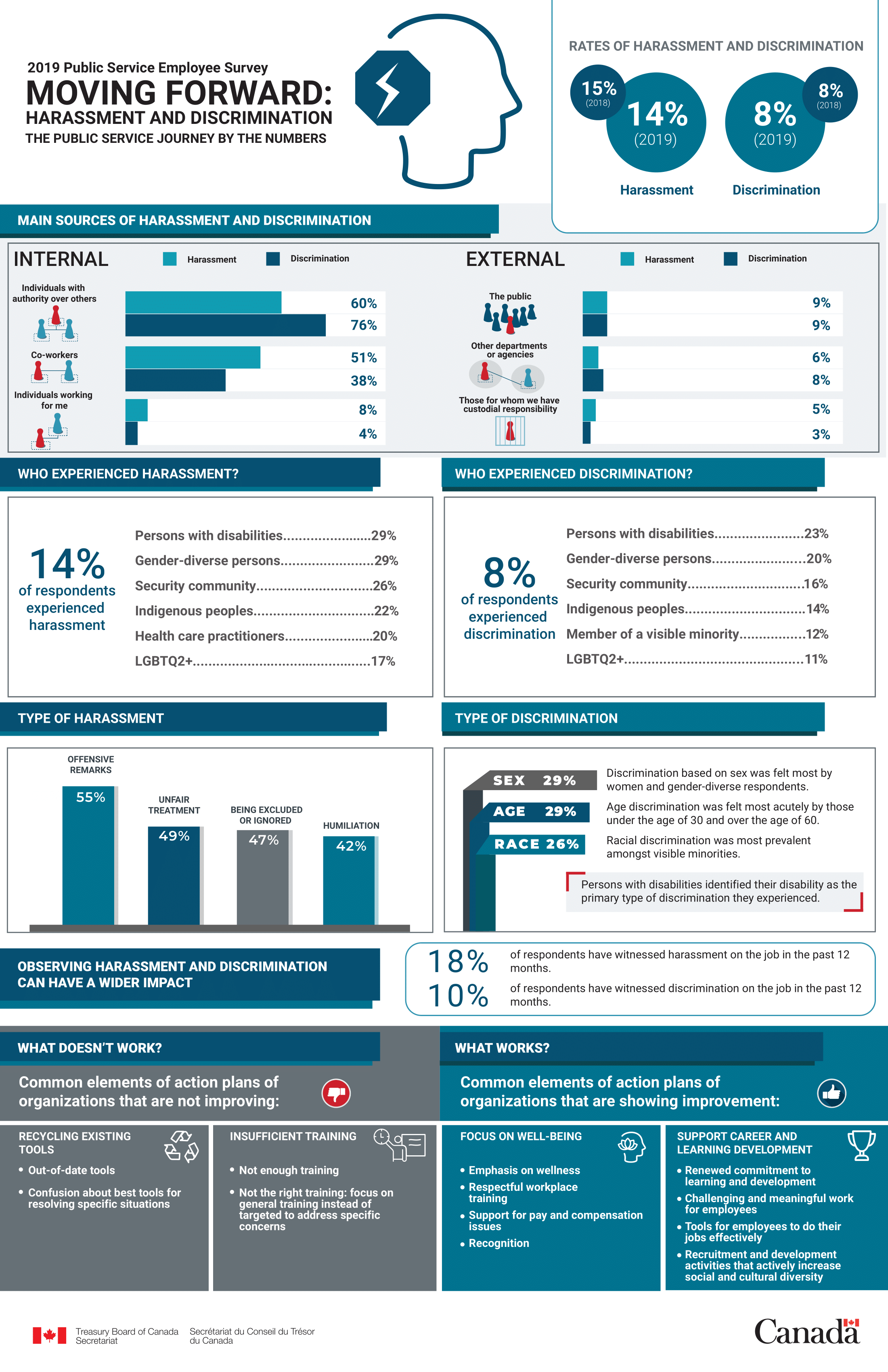Harassment and Discrimination

Harassment and Discrimination
(PDF, 184 KB)

Text version
Rates of harassment and discrimination
| Harassment | Discrimination | |
|---|---|---|
| 2018 | 15% | 8% |
| 2019 | 14% | 8% |
Main sources of harassment and discrimination
| Internal sources | Harassment | Discrimination |
|---|---|---|
| Individuals with authority over others | 60% | 76% |
| Co-workers | 51% | 38% |
| Individuals working for me | 8% | 4% |
| External sources | Harassment | Discrimination |
|---|---|---|
| The public | 9% | 9% |
| Other departments or agencies | 6% | 8% |
| Those for whom we have custodial responsibility | 5% | 3% |
Who experienced harassment?
14% of respondents experienced harassment
| Results by demographic | Percentage |
|---|---|
| Persons with disabilities | 29 |
| Gender-diverse persons | 29 |
| Security community | 26 |
| Indigenous peoples | 22 |
| Health care practitioners | 20 |
| LGBTQ2+ | 17 |
Who experienced discrimination?
8% of respondents experienced discrimination
| Results by demographic | Percentage |
|---|---|
| Persons with disabilities | 23 |
| Gender-diverse persons | 20 |
| Security community | 16 |
| Indigenous peoples | 14 |
| Member of a visible minority | 12 |
| LGBTQ2+ | 11 |
Type of harassment
- Offensive remarks (55%)
- Unfair treatment (49%)
- Being excluded or ignored (47%)
- Humiliation (42%)
Type of discrimination
- Sex (29%)
- Discrimination based on sex was felt most by women and gender-diverse respondents.
- Age (29%)
- Age discrimination was felt most acutely by those under the age of 30 and over the age of 60.
- Race (26%)
- Racial discrimination was most prevalent among visible minorities.
Persons with disabilities identified their disability as the primary type of discrimination they experienced.
Observing harassment and discrimination can have a wider impact
- 18% of respondents have witnessed harassment on the job in the past 12 months.
- 10% of respondents have witnessed discrimination on the job in the past 12 months.
What doesn’t work?
Common elements of action plans of organizations that are not improving:
| Recycling existing tools | Insufficient training |
|---|---|
| Out-of-date tools | Not enough training |
| Confusion about best tools for resolving specific situations | Not the right training: focus on general training instead of targeted to address specific concerns |
What works?
Common elements of actions plans of organizations that are showing improvement:
| Focus on well-being | Support career and learning development |
|---|---|
| Emphasis on wellness | Renewed commitment to learning and development |
| Respectful workplace training | Challenging and meaningful work for employees |
| Support for pay and compensation issues | Tools for employees to do their job effectively |
| Recognition | Recruitment and development activities that actively increase social and cultural diversity |